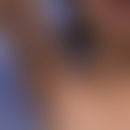DefinitionThis section has been translated automatically.
Fixed combination of Uvae ursi folium, Solidaginis herba, Orthosiphonis folium, which has the status of a recommendation according to Commission E and is therefore referred to as a sample.
EffectsThis section has been translated automatically.
The fixed combination of:
- Uvae ursi folium (bearberry leaves)
- Solidaginis herba (goldenrod)
- Orthosiphonis folium (Orthosiphon leaves)
has an anti-inflammatory effect, slightly antispasmodic, bacteriostatic in alkaline environment and promotes urination.
You might also be interested in
Field of application/useThis section has been translated automatically.
The fixed combination of Uvae ursi folium (bearberry leaves)+Solidaginis herba (goldenrod) +Orthosiphonis folium (orthosiphon leaves) is used as a supportive treatment for inflammatory diseases of the urinary tract.
DosageThis section has been translated automatically.
In this fixed combination, bearberry leaves are included as a single drug in accordance with the average daily dose; goldenrod and orthosiphon leaves are included as single drugs in quantities of 50 to 75 % of their daily dose.
Undesirable effectsThis section has been translated automatically.
In patients with a sensitive stomach and in children, nausea and vomiting may occur in rare cases.
ContraindicationThis section has been translated automatically.
In the case of existing oedema due to limited heart or kidney activity, flushing therapy with this combination should be avoided.
InteractionsThis section has been translated automatically.
During the application of bearberry leaves, no parallel ingestion of substances that lead to the formation of acidic urine should take place.
Note(s)This section has been translated automatically.
The duration of use should only exceed 14 days after consultation with a doctor. In addition, a sufficient fluid intake of at least 2 l/day should be observed.
LiteratureThis section has been translated automatically.
- Schilcher H (2016) In: Guide to Phytotherapy, Urban & Fischer Verlag Munich, p. 358.
- Wiesenauer M (2008) PhytoPractice. Springer medicine publishing house Heidelberg




